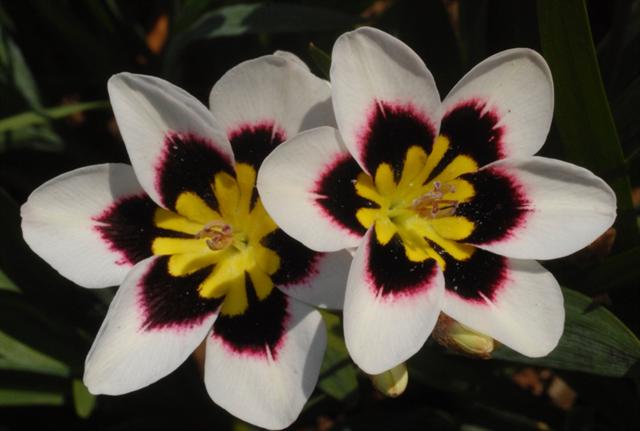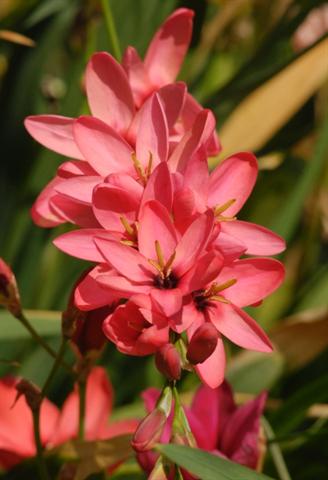Many plant species made their way north during the age of Victorian exploration when there was a passion for anything exotic, and enthusiasts in Europe pounced eagerly on the offerings of collectors who made their fortunes when they returned home with strange and new plant specimens.
Of course, many of the same explorers succumbed to awful maladies like malaria and failed to return altogether. Little did they know that the same plants that they were collecting often held the remedies for the dread illnesses that afflicted them. Pharmacists around the world today are studying the properties of bulbs indigenous to our country, and coming up with results reflected in the practices of our traditional healers.
One of the lucky ones who survived his adventures in Africa was a German physician named Friedrich Heinrich Theodor Freese. Freese studied under Danish Botanical collector Christian Friedrich Ecklon in South Africa during the 1800s, and from his name we get "Freesia", one of the most popular of all bulbs grown world-wide by florists, gardeners and perfumiers.
It hails from the Western Cape. Another such was English physician William Watson from whose name we get "Watsonia", also a native of the fairest Cape. A contemporary of his was Werner de Lachenal, a professor of botany at Basel University - you guessed it: "Lachenalia"!
As autumn cools into winter, there is still much to be done on the bulb front. It's not too late to invest in commercially grown indigenous bulbs. They will flower a little later than their European counterparts (like daffodils or tulips) but, being native to our land, they love the sun. Like you and me, they'll revel in the warmth of our spring and early summer sun.
It always surprises me that names like Tritonia (blazing star), Lachenalia (Cape cowslip) and Ixia (wand flower) are not as well known or recognised as 'daffodil' and 'tulip' because they are ours, and they have their own startling beauty.
We should all know Ornithogalum as a matter of course because its nick name, 'Chinchinerinchee', seems to come straight out of a Disney spell book. Sparaxis is also unforgettable - its nickname, 'harlequin', fits perfectly its vividly coloured and patterned little face.
If I were you, I wouldn't wait another moment before planting a whole mass of Ixias. I shall never forget the first time I saw them flowering in drifts in the springtime. They were scattered in pools of bright sunshine in a huge Bryanston garden that was on show several years ago. The lawn was like velvet, the beds were full of spring annuals, the well-shaped trees were flushed with lime green freshness but what I can still see perfectly printed in my mind is the waving wand flowers, leggy and slim with their sorbet-coloured petals in cream, apricot, baby pink and white, tapering to a throat of darker shades of red, purple and orange.
Just don't forget: once you have them in the ground, if you live in a summer rainfall region, keep your bulbs nice and moist while they weather the winter - it's what they expect, as natives of the Western Cape. (Rian Swanepoel, Hadeco Bulb)
Come see our Facebook page, http://www.facebook.com/hadeco.bulbs, follow us on Twitter @HadecoBulbs, come shop with us at our Online Shop www.hadeco.co.za/shop or visit www.hadeco.co.za for more information.

















